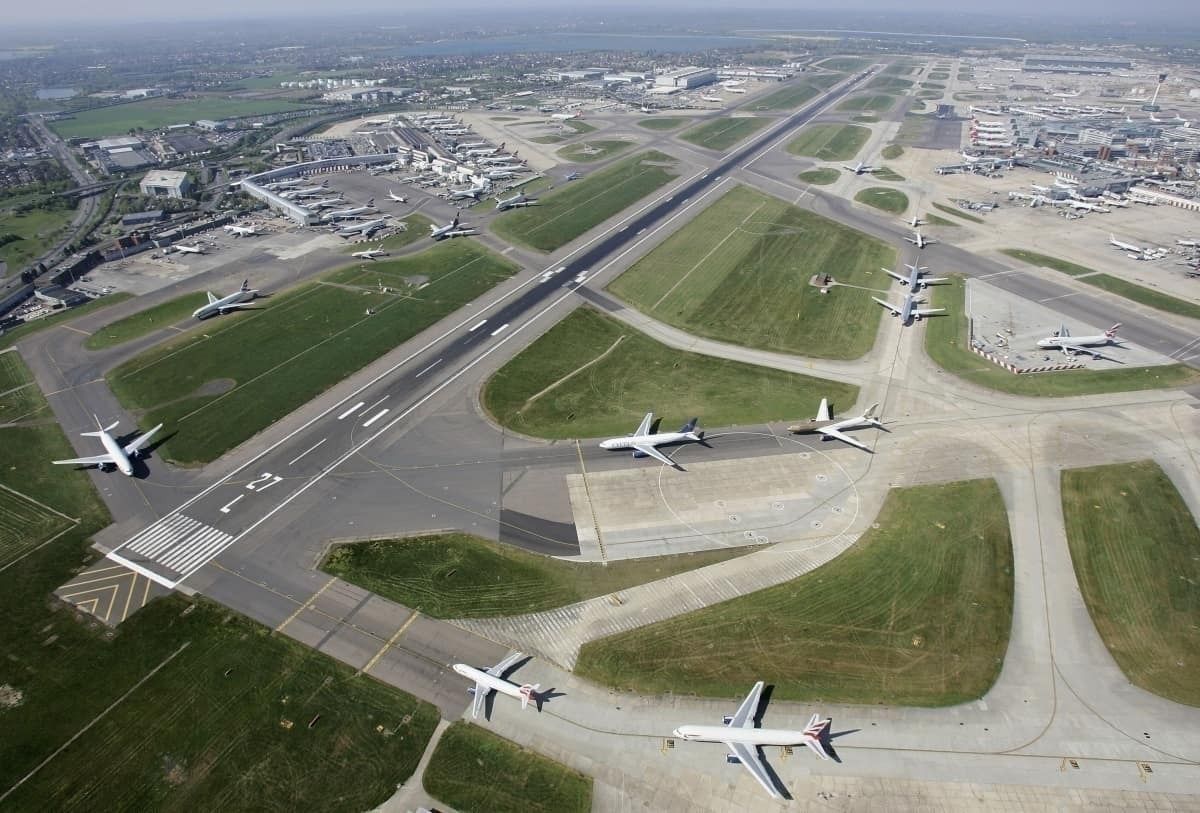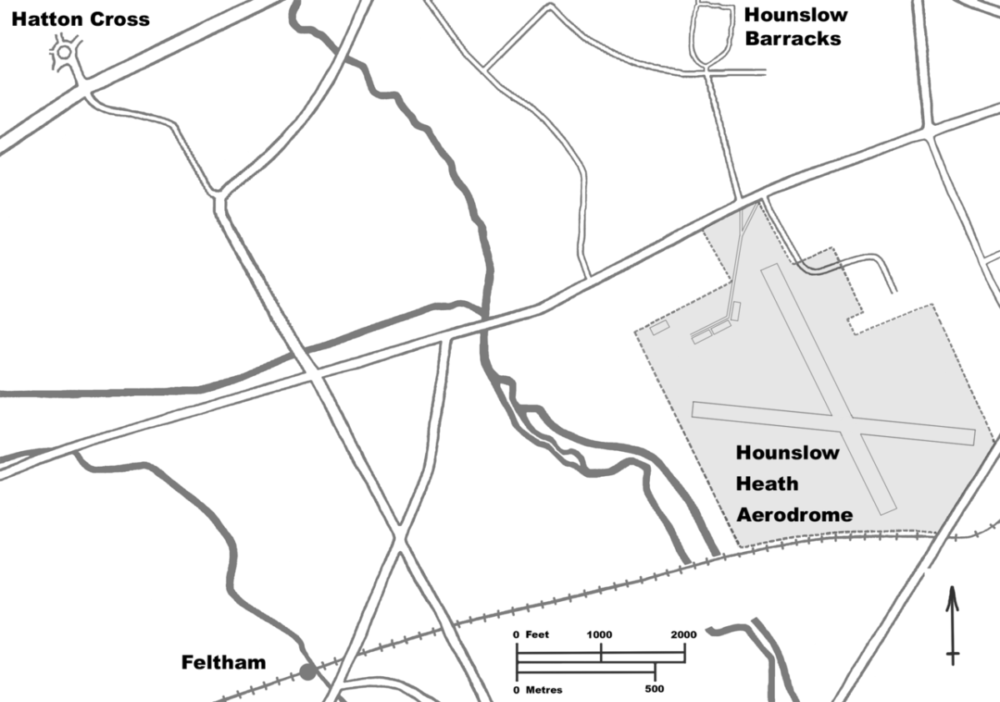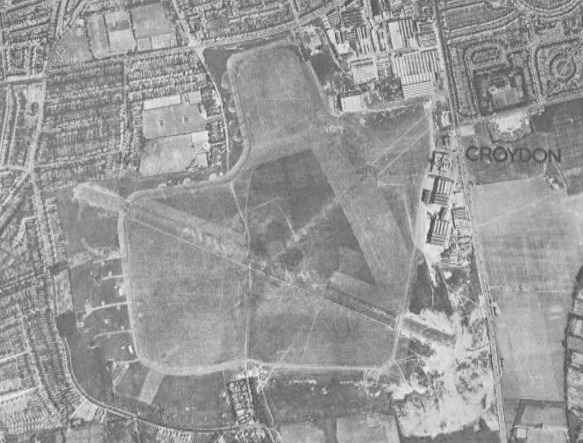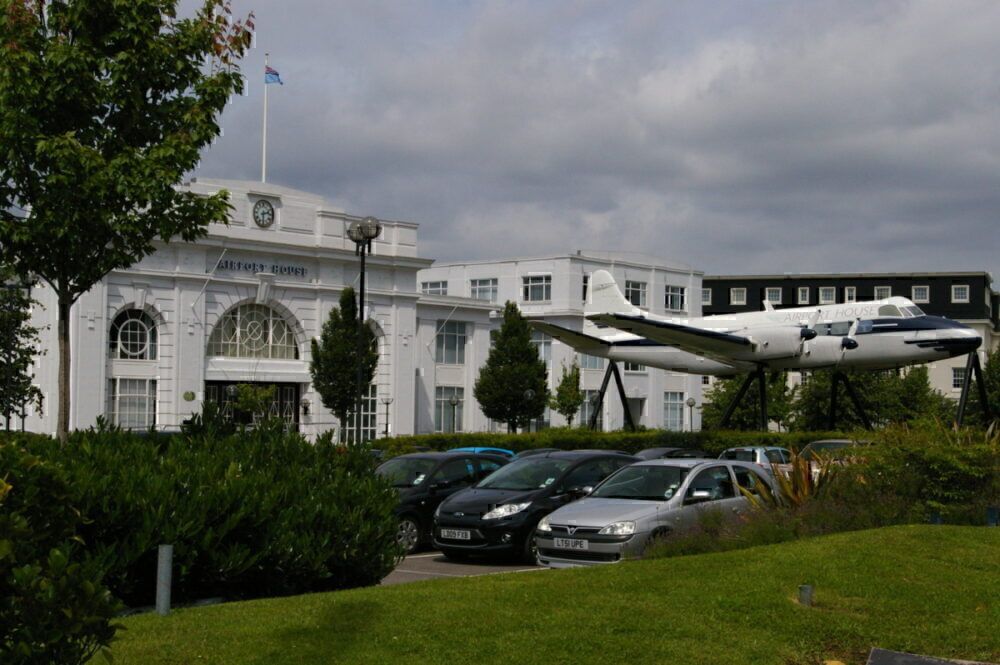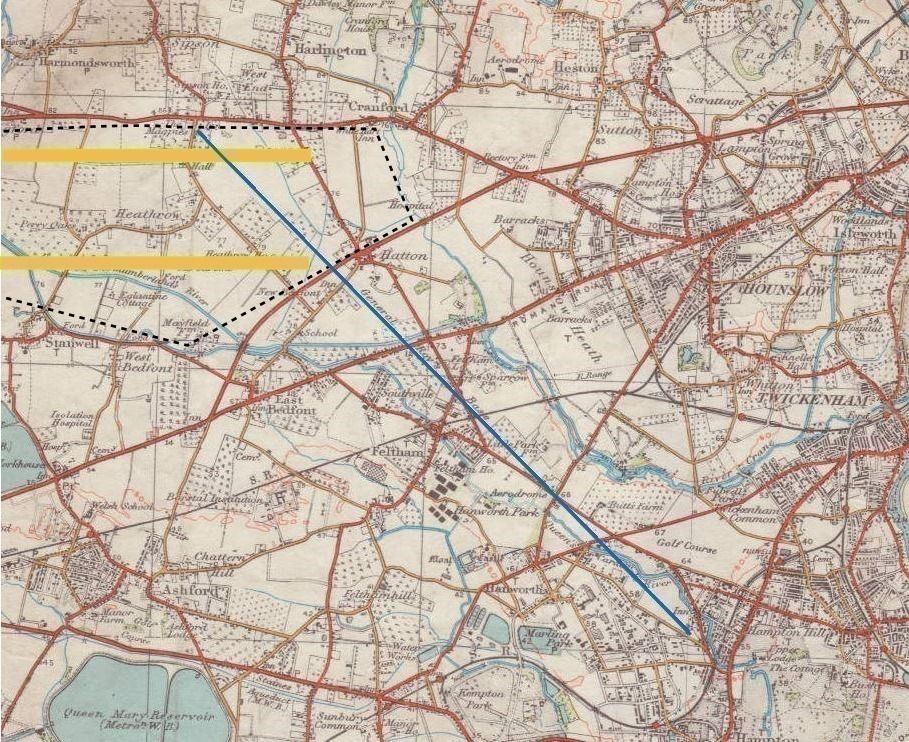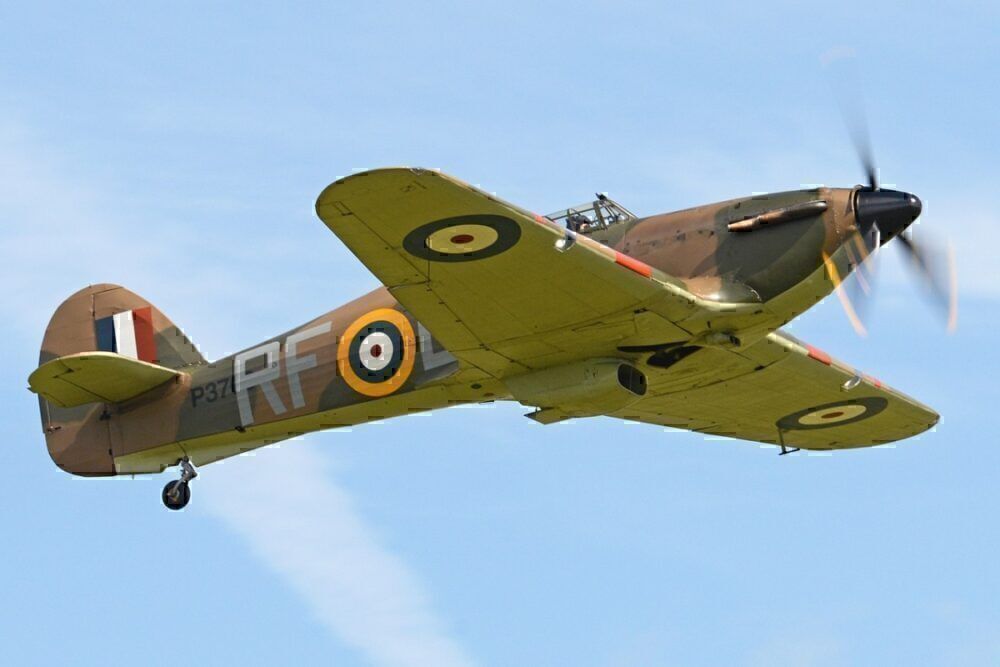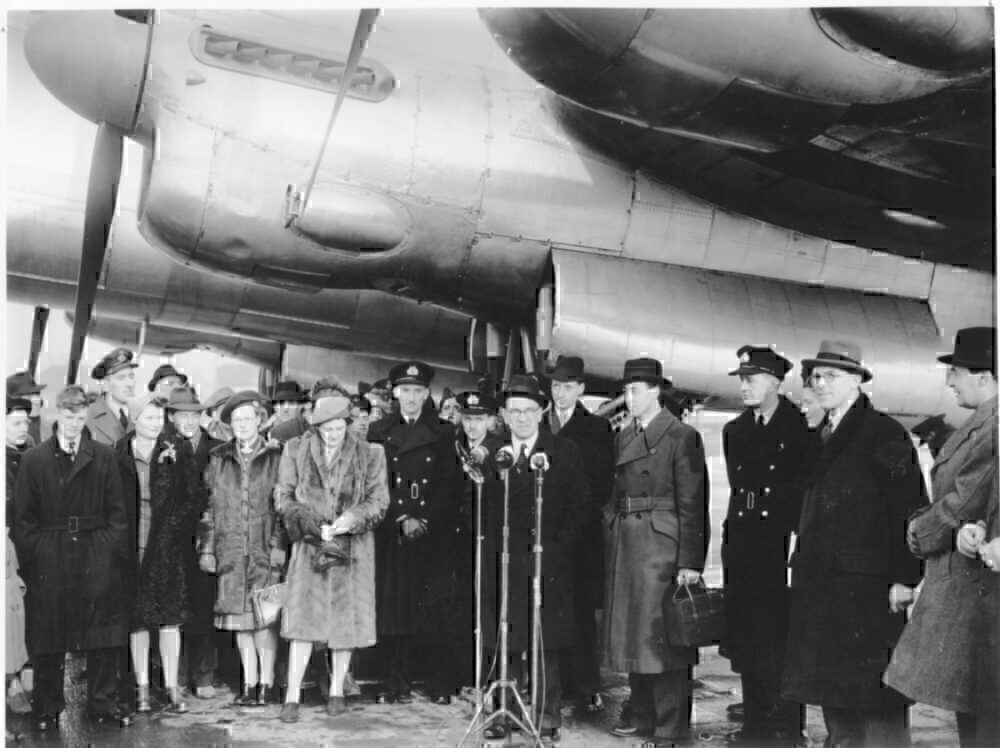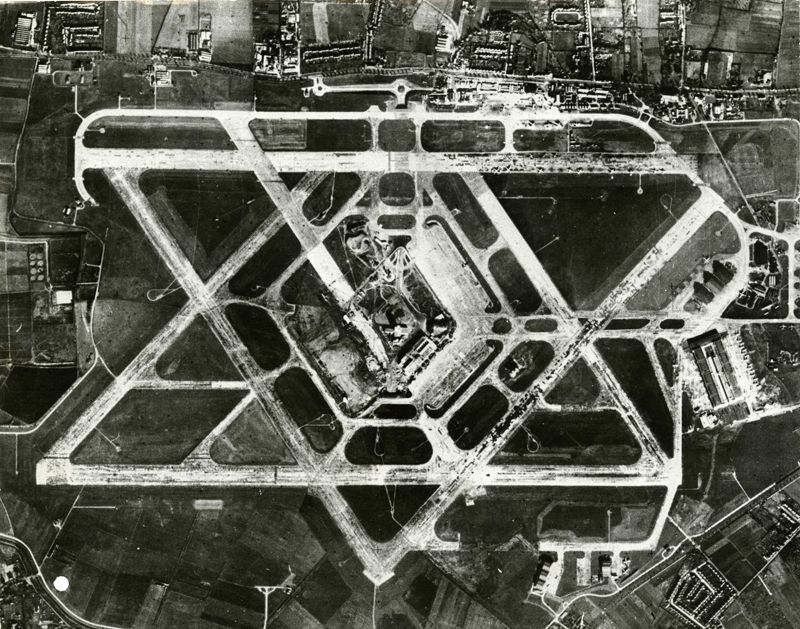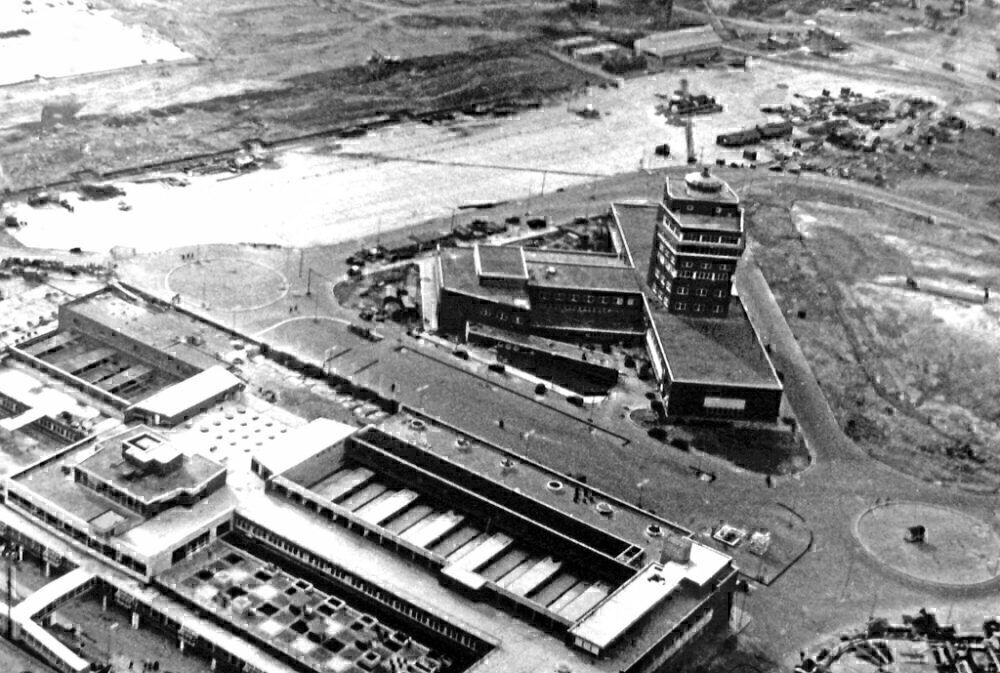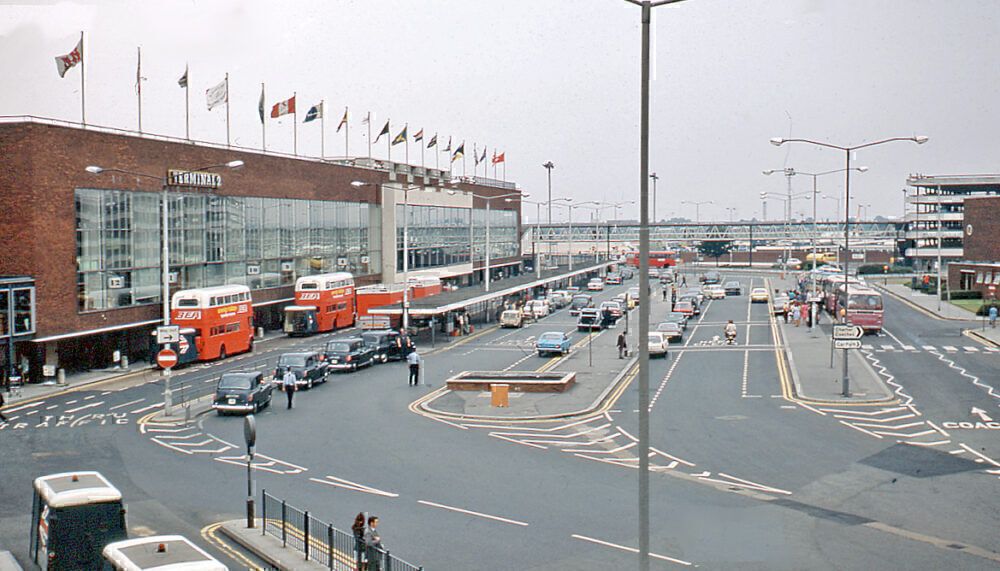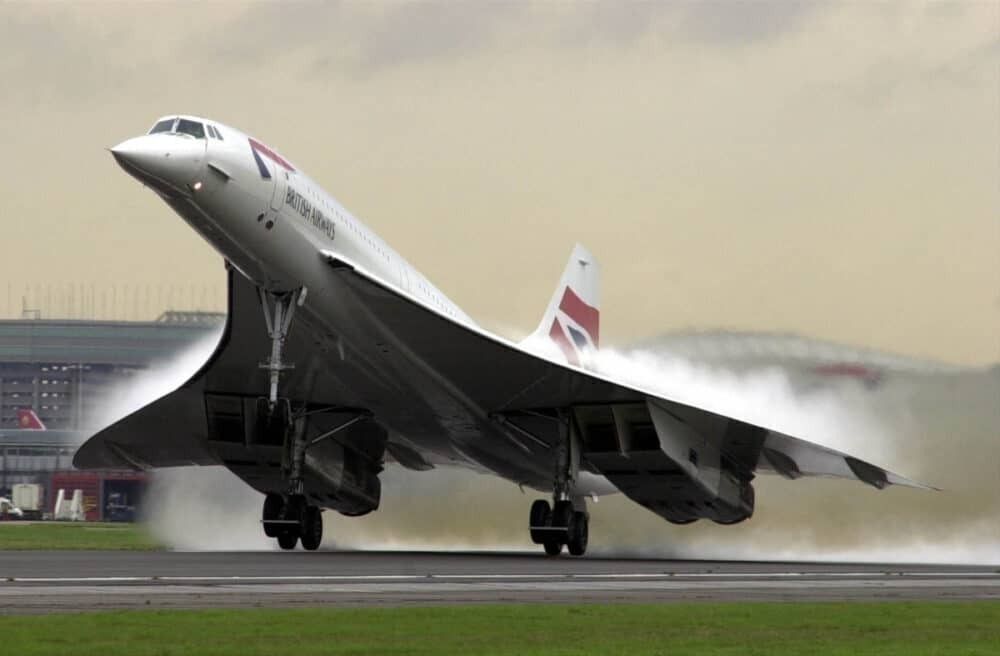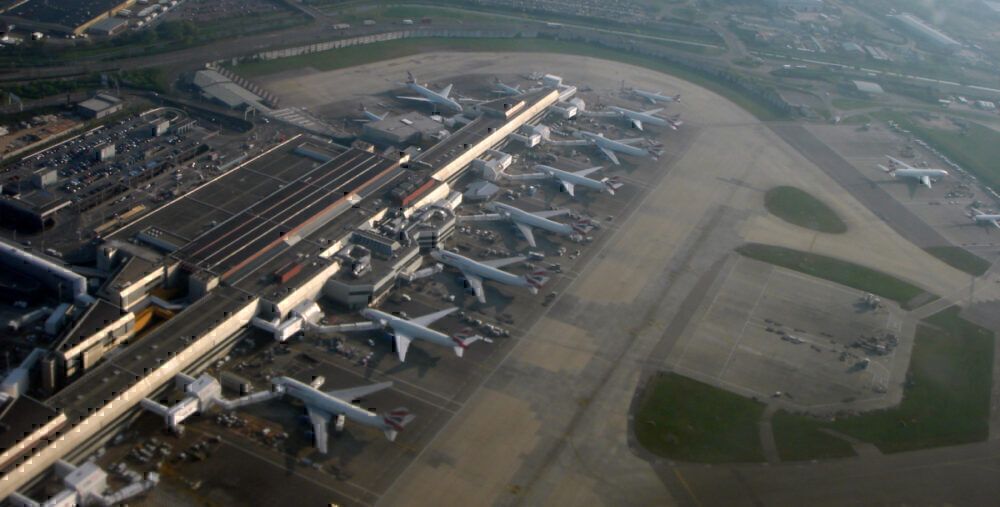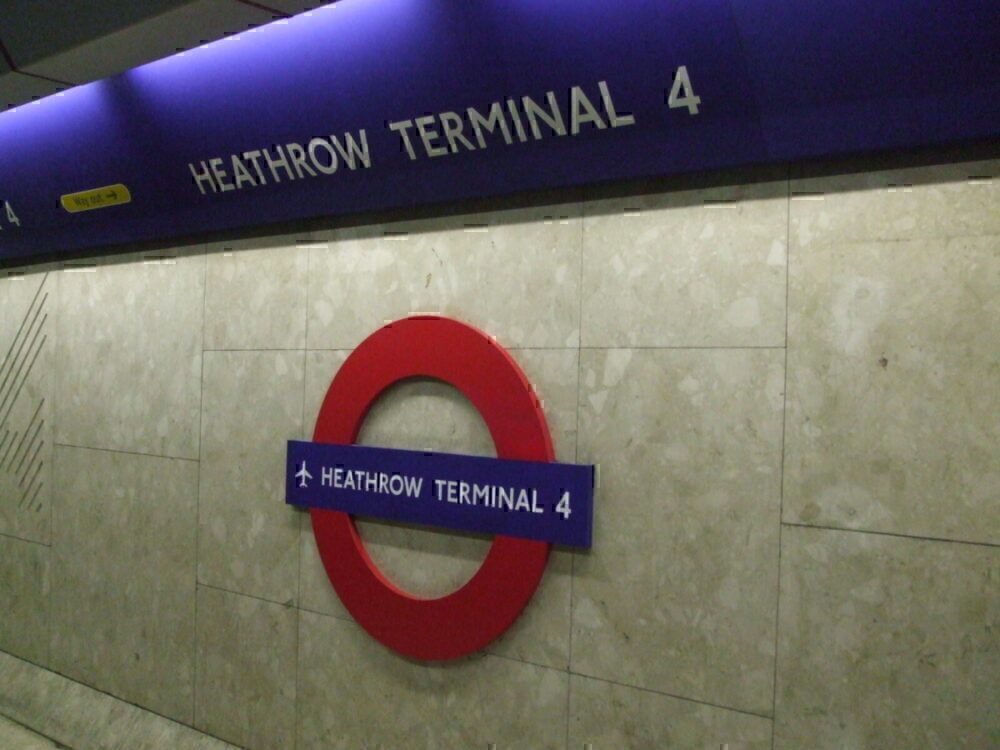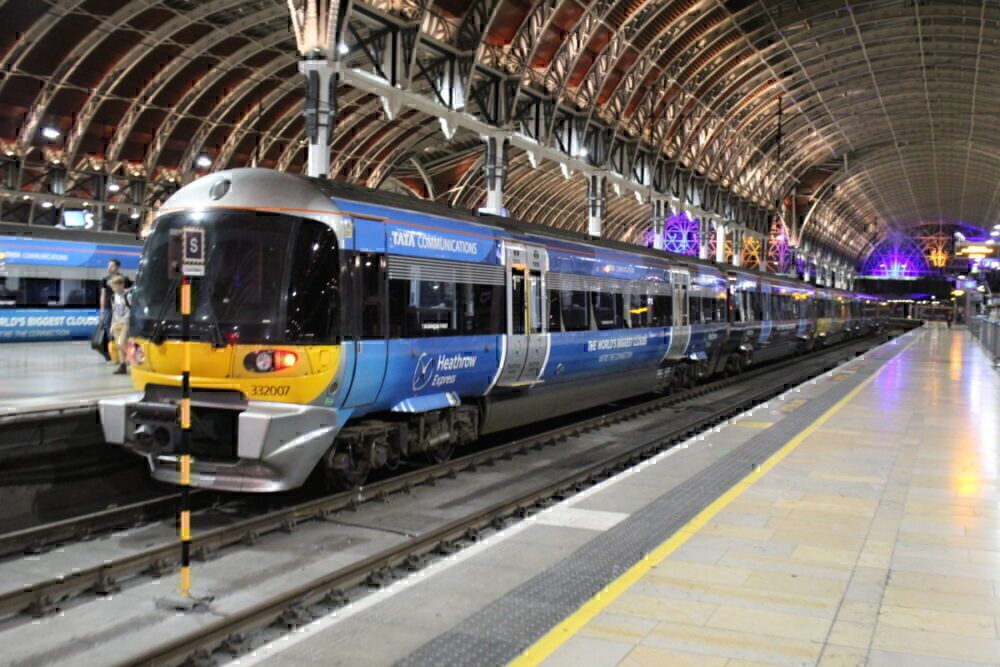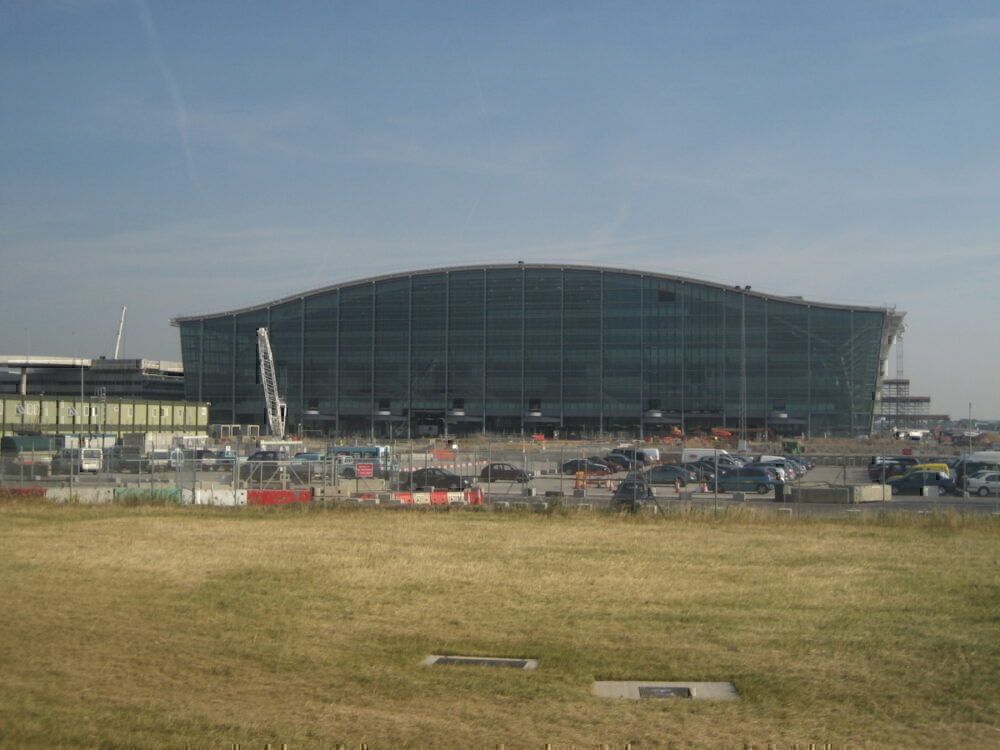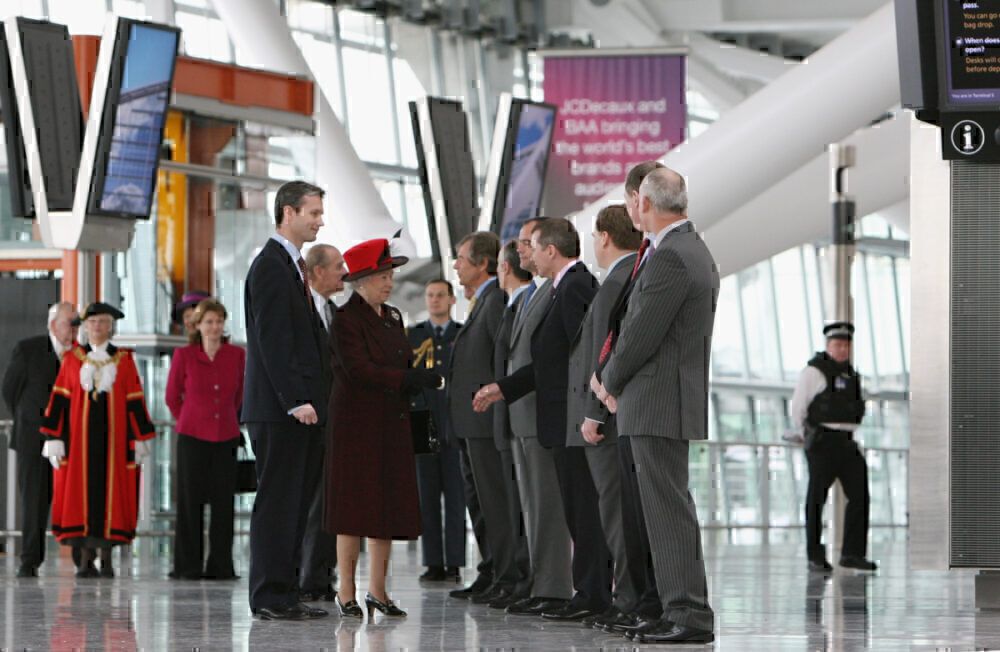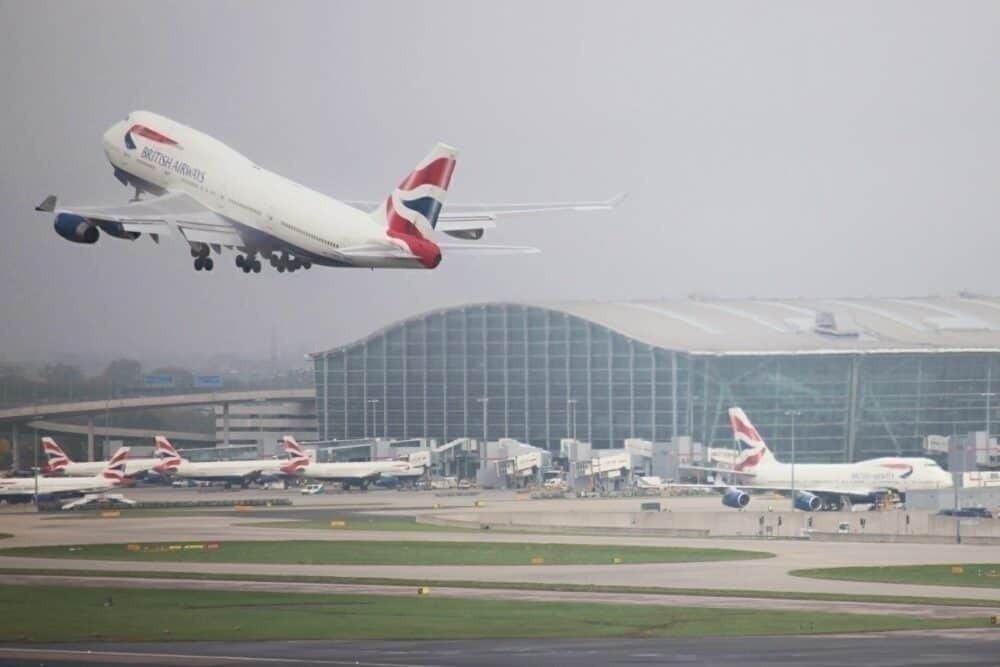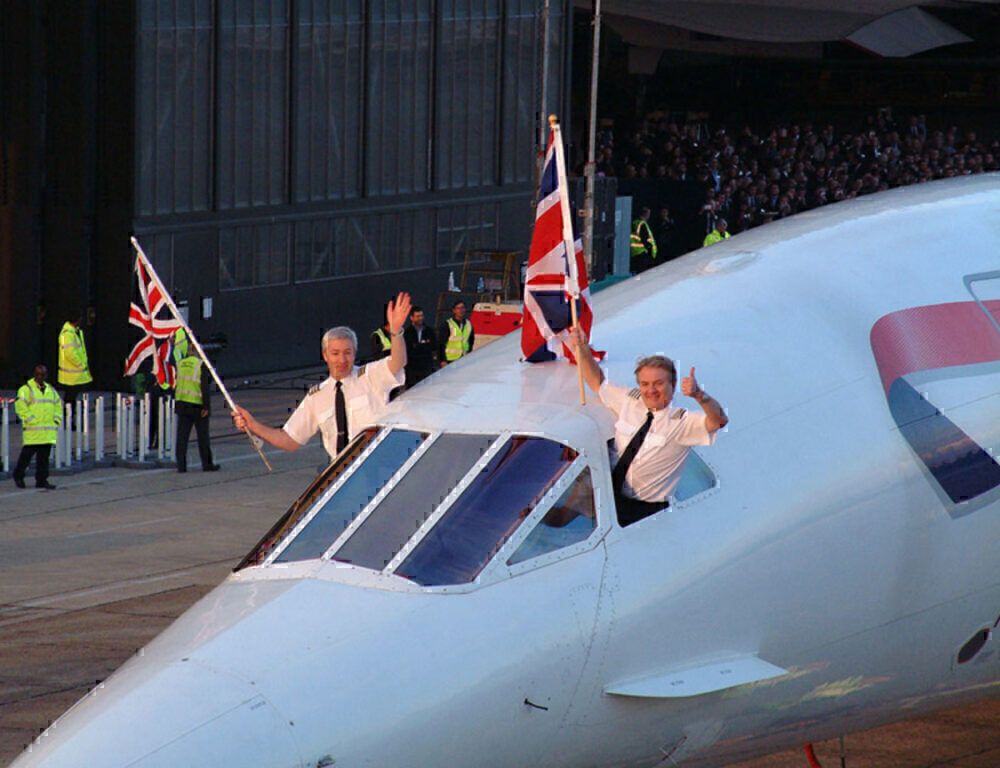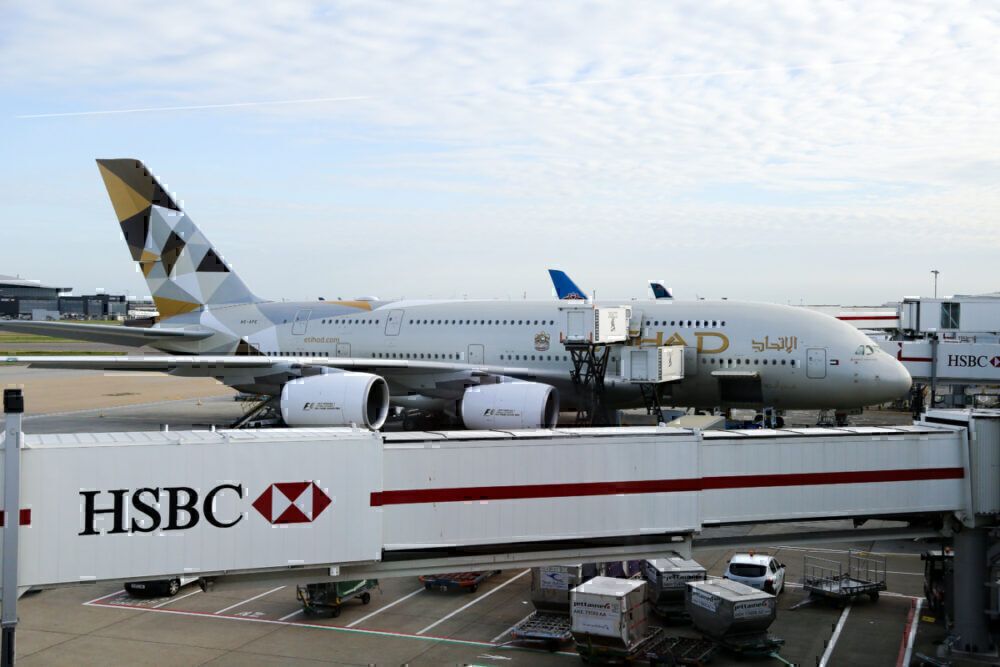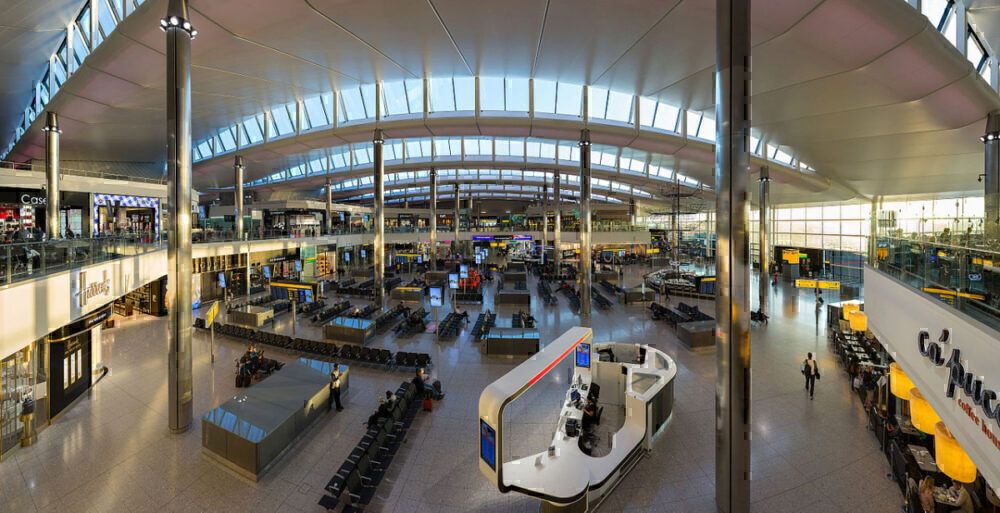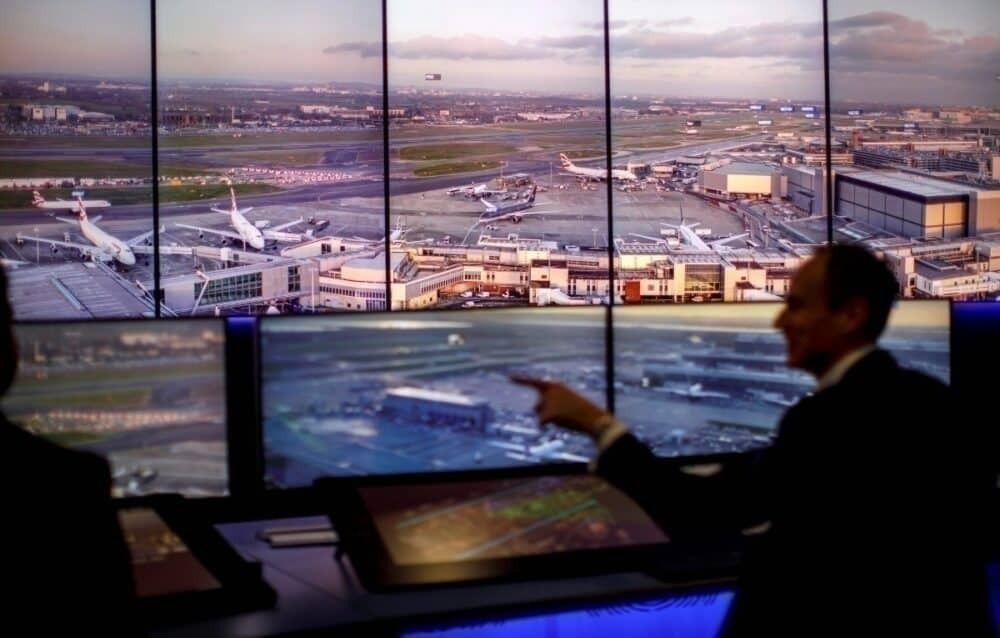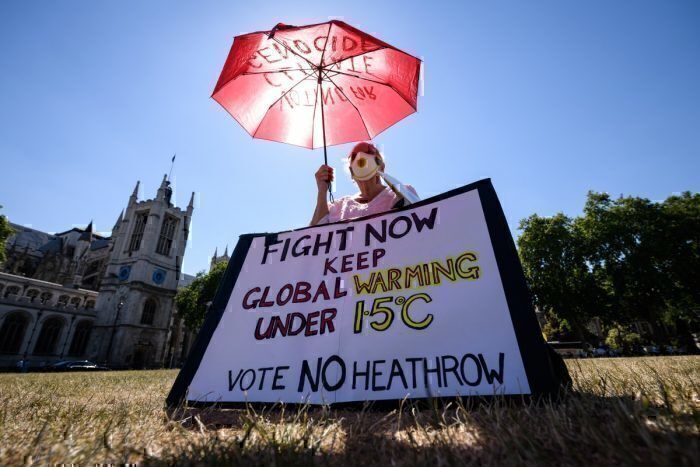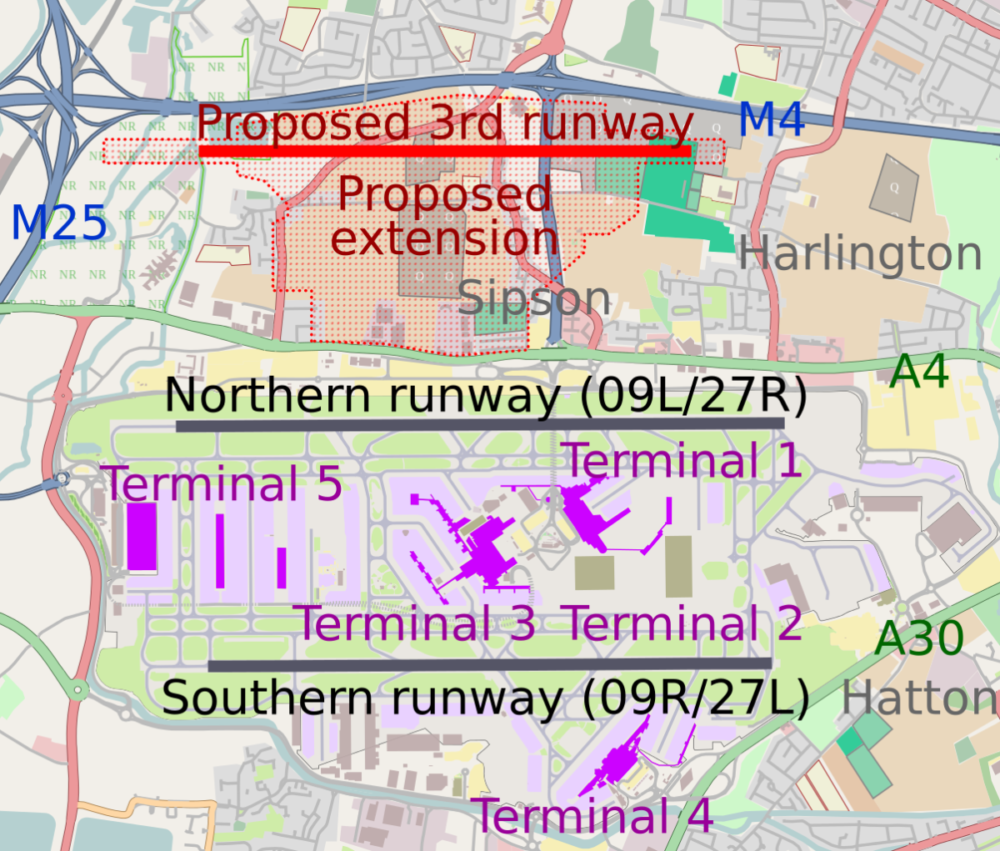London Heathrow airport is one of the best-known airports in the world, and one of the busiest. In 2019, it was the busiest airport in Europe and the seventh busiest in the world.
Heathrow airport has a long and interesting history, celebrating its 70th anniversary in 2016. The airfield was built in 1929 for private use, but it did not become a commercial airport until 1946. It has grown continually from them until the slowdown in 2020, adapting to changes in aviation over the decade. This article takes a look at this history and development of the airport, and where it is heading in the future.
[powerkit_toc title="Table of Contents" depth="2" min_count="4" min_characters="1000"]
Before Heathrow Airport
Although Heathrow is the main airport for London today, this was not always the case. In the early 20th Century, there were a couple of small airfields in the same area. Northolt Aerodrome, north of today's airport, was used for aircraft testing and assembly. And to the south was Hounslow Heath Aerodrome. This was London's main airport from 1917 to 1919, and the only one able to handle international flights.
Hounslow Heath Aerodrome closed in 1919, and Croydon Airport became London's main airport. Up until the Second World War, this was the UK's main airport. It saw many innovations, including the world's first purpose-built air traffic control tower and the first passenger terminal in the UK. It transferred to RAF use during the war.
Although the airport returned to civilian use after the war, Heathrow became designated as the main airport for the city. Croydon finally closed down in 1959.
An airfield opened in 1930
Heathrow airport had its origins in 1929. Fairey Aviation had used the airfield at Northolt, but the government ordered this to close in 1928. Fairey Aviation was a British aircraft manufacturer, established in 1915 and operating until 1960 when Westland Aircraft took it over. The company had strong links with the Air Force and Navy and designed several military aircraft.
With the closure of Northolt, Fairey needed a new base for flight testing and looked at the area near the then small village of Heathrow.
The buildings there (including Heathrow Hall) were centered on a country lane, running approximately along the east and south perimeter of today's airport. The area was mostly used for farming and growing wheat at the time, but had been used for emergency landings in the past. Its natural flatness and suitable size had been noticed.
Fairey Aviation bought around 150 acres of farmland from four different landowners, at the cost of approximately £150,000 ($197,000). It built an airfield there, known as the Great West Aerodrome, and later moved its main factory closer to the site. This opened in June 1930. The airfield was not used at this time for commercial traffic (that remained at Croydon airport).
Over the next decade, the airfield was used for a number of events. These included the annual meeting of the Royal Aeronautical Society, at the time the main gathering and promotional event for the aviation industry.
Use during the Second World War
Fairey Aviation remained at the airport following the outbreak of war in 1939. But the Royal Air Force (RAF) made us of the airport as well. It became a diversion location and, for some time, a secondary base for Hurricane aircraft, for nearby RAF Northolt.
The government, however, intended to requisition the airfield for use as a base for long-range bomber aircraft. These plans were revealed at the start of 1944, and no additional compensation (other than that based on the original land purchase) was required under wartime legislation. Fairey Aviation contested this, in a legal battle that carried on until 1964.
Fairey Aviation moved to Heston Aerodrome, and the Air Ministry took over the airfield and surrounding land and roads. The military plans had been for bombers and long-range transport aircraft to support the war continuing in the Far East. However, the war ended before construction had finished at the airfield, and plans were soon changed for it to become a civilian airport.
There has been some discussion since that the military role was exaggerated by the Air Ministry, with the intention always being to develop it for civil aviation. Harold Balfour, the Under-Secretary of State for Air at the time of the requisition, published his autobiography, "Wings Over Westminster," in the 1970s. He discussed the issue extensively in this, claiming that the intention was always to convert the airfield for civilian use.
Opening as a civilian airport in 1946
In January 1946, ownership of the site was transferred from the Air Ministry to the Ministry of Civil Aviation. Although the airfield had been temporarily used for some RAF aircraft and personnel, no squadron moved it's base there.
Things moved quickly from there. The first civilian flight took place in March 1946. This was a British South American Airways Avro Lancastrian (a converted military Lancaster aircraft). The airport was officially opened as London Airport in May, and international flights began.
The airport at this time looked very different from how it does today. Under Fairey Aviation, it had just one runway. Two more were added in 1946, and a further three opened in the early 1950s. These multiple runways ensured that two were always available for use in any wind direction. Heathrow would retain these until the 1970s when two runways were lengthened for new jet aircraft, and others removed to make way for more terminal construction.
Passenger and operational facilities were much more limited as well. There was just one set of temporary passenger and cargo buildings, converted from previous military marquees, at the northeast edge of the airfield.
The control tower was a small three-story brick building, typical of those at RAF bases (located where the airport police station is today). The first purpose-built terminal building would not open until 1955.
Heathrow Airport provides a good description (on its website) of how it would have felt to passengers at this time.
"To reach aircraft parked on the apron, passengers walked over wooden duckboards to protect their footwear from the muddy airfield. There was no heating in the marquees, which meant that during winter it could be bitterly cold, but in summer when the sun shone, the marquee walls were removed to allow a cool breeze to blow through."
Expansion of the airport in the 1950s and 1960s
Passenger numbers rose significantly in the early years. According to Heathrow, 63,000 passengers used the airport in its first year (1946). By 1951, this was up to 796,000.
To handle this growth, there was an extensive redesign at the airport. British architect Frederick Gibberd designed a new layout, with the main terminal, a central area with underground vehicle access, and a new 38.8-meter control tower.
The first terminal, called the Europa terminal and later renamed to Terminal 2, was opened in 1955 by Queen Elizabeth II and the Duke of Edinburgh. It was extended in 1956, with an additional 'Britannic' building for domestic flights. The old original terminal buildings and marquees were closed by 1961.
The 1960s saw the longest runway being extended (from 9,200 feet to 11,000 feet), and a second terminal opening. The Oceanic building, later renamed to Terminal 3, opened in November 1961. This would handle more long-haul flights and, at first, only operated for departing flights.
By 1968, passenger numbers were up to 14 million a year. A third terminal was opened this year and officially named Terminal 1 by Queen Elizabeth II in 1969. This was when the other two terminals were renamed Terminals 2 and 3. The airport by this time was known as Heathrow, having been renamed from London Airport in 1966.
The 1970s – connecting the airport to the city
Further expansion took place at Heathrow in the 1970s, as passenger numbers grew and aircraft got bigger. In 1970 Terminal 3 was expanded with a new arrivals building, so it now operated for both departures and arrivals.
There were significant changes to the runways in the 1970s. The two main East/West orientated runways (then designated 10/28 L and R) were extended to handle the new Boeing 747. Three of the other runways were closed at this time, but one smaller runway (23) was left until 2002 and sometimes used for crosswind landings.
The 1970s also saw the London Underground network extended to Heathrow. The Piccadilly line was first extended from Hounslow West to Hatton Cross in 1975, then further to Heathrow Central (serving all three terminals at the time) in 1977.
Concorde arrived at the airport in 1976. It was a joint effort between the UK and France. While it was intended for use by other airlines (and several placed orders but never took delivery), only British Airways and Air France ever operated it. British Airways flew it on daily services to the US.
By the end of the 1970s (according to Heathrow Airport), the airport was handling 27 million passengers annually.
The 1980s – Adding the fourth terminal
Continued growth in air travel meant an additional terminal was soon needed. Terminal 4 was opened in 1986 by the Prince and Princess of Wales. Terminal 4 became the new base for British Airways' long-haul flights.
It was built to the south of the southerly runway, close to the cargo terminal but far from the other three terminals. The original airport plan saw the first three terminals all built in the central area, but there was now no additional space in that area.
There has also always been limited space for car parking in this area (with car parks being added further from the airport). This shows well the differences at the time the airport was designed. Travel was an elite affair, and it was expected that most passengers would be driven to the airport.
A loop was added to the London Underground line before the terminal even opened, and an additional station built to serve the terminal (as it still does today).
British Airways moved out of Terminal 4 after Terminal 5 opened in 2008. It is home today to 35 different airlines, the highest number of all the terminals (according to Heathrow's reporting).
A significant change in airport operation took place in 1987 when the company controlling the airport, British Airports Authority, was privatized. Privatization brought many changes. Most notably to airport users was a large expansion in airport retail as a new source of revenue for the operators.
The 1990s – Heathrow Express opens
In 1998, the Heathrow Express, a direct rail link between the airport and Paddington station in central London, opened. This required new stations at the airport and a new rail link built to connect with the Great Western Rail mainline.
Until 2003, a check-in service was offered at Paddington station, but this was withdrawn due to high costs and lower than expected use. It is a shame as the rail link has never become as popular as links at other airports, such as Hong Kong International Airport. Links may improve when the Elizabeth Line (part of the Crossrail project) opens in 2023 and offers better connections to central London.
Plans were also made during the 1990s for the development of Terminal 5. This was announced in 1992, following a decision to expand Heathrow instead of Stansted as the best way forward to handle aviation growth.
The public consultation process for Terminal 5 took nearly eight years and finally concluded in 1997. These were the most prolonged public inquiries in the UK at that point, and are (according to reporting in The Guardian) often cited as an example of why the process needs reforming.
The 2000s – Terminal 5 opens
Following the lengthy public consultation, construction work on Terminal 5 began in 2002. Richard Rogers was the architect (with previous projects including the Pompidou Centre in Paris, the Lloyds building in London and Madrid Barajas Airport's Terminal 4), and Laing O'Rourke led the construction.
Construction required the diverting of two rivers and re-routing of major roads at the western edge of the airport. Overall, construction cost £4 billion ($5.3 billion), with the completed main terminal opening in 2008.
The new terminal was not without its issues. Severe problems with check-in and baggage systems led to over 28,000 bags piling up during the first five days of operation (for more, see this coverage by the BBC). This was a major embarrassment for British Airways and Heathrow Airport.
Terminal 5 was intended to be the new home for British Airways flights, with all services from Terminal 4 moving there (although some remain at Terminal 3 still today). Iberia and American Airlines have since joined British Airways in its home at Terminal 5.
Terminal 5 was not the only new construction at this time. In 2007, a new air traffic control tower opened, replacing the original one built in the 1950s. At 87 meters, this is tallest in the UK.
The 2000s also saw some notable aircraft moments. The last Concorde touched down at the airport in 2003. British Airways still retains one aircraft. It can be seen outside its hangars and maintenance area.
And the A380 arrived in 2008, first using specially built airbridges at Terminal 3 and soon after at the new Terminal 5. A Singapore Airlines A380 was the first to fly into Heathrow - the first A380 flight into Europe.
To prepare for the A380, over £440 million was spent on upgrades (according to reporting by the BBC at the time). This included £105 million for the Terminal 3 pier (which would also be used by Emirates), resurfacing of runways, and changes to runway lighting and taxiways.
The 2010s – Changes to the central terminals
The 2010s finally saw some changes and upgrades to the now-aging original terminals. Terminal 2 closed in 2009 and was demolished in 2010. A replacement Terminal 2, 'The Queen's Terminal,' opened in June 2014. Its first arriving flight was a United Airlines service from Chicago.
And Terminal 1 was closed in 2015. It will not be replaced, but once demolished, space will be used for the second phase of Terminal 2. This was initially planned to be completed by 2019 but has been delayed until at least 2024.
2020 – Slowdown due to COVD-19
The slowdown in aviation and travel in 2020 has had a significant effect on Heathrow. Passenger numbers that had been growing since the 1950s suddenly plummeted and aircraft movements slowed significantly.
By the end of July 2020, Heathrow revealed a loss of over £1 billion ($1.29 billion) before tax and adjustments in the first six months of 2020. And passenger numbers were down 60% compared to the same period in 2019. And from April 2020, it started using only one of its two runways.
The terminals have seen a shakeup too, with reduced passenger numbers. The airport closed Terminals 3 and 4, using the spare space used to park aircraft. Japan Airlines joined British Airways and other oneworld airlines in Terminal 5, with all other airlines moving into Terminal 2.
The future of Heathrow Airport – A third runway?
The coronavirus pandemic in 2020 has significantly effected Heathrow's future plans. For many years, there has been an ongoing discussion about a third runway.
In 2012, the UK government formed the independent Airports Commission group to look at the options for increasing airport capacity in the South East of England. Possible options included a third runway at Heathrow, expansion and second runway at Gatwick Airport, and building a new airport, the Thames Estuary Airport to the east of London.
In 2015, the commission concluded that the best option was expansion at Heathrow, with a third runway and a new terminal, to be built to the northwest of the airport. In 2016, the government voted in favor of this, but environmental campaign groups have since held up plans. They have argued that the expansion plans are unlawful as they failed to take into account commitments to tackle climate change.
These plans, however, look like they will be delayed. Speaking in May 2020, John Holland-Kaye, Heathrow's CEO, explained how the priorities at Heathrow had changed, and all expansion, including a third runway, would be delayed. The focus was now on protecting jobs and businesses.
According to No 3rd Runway Coalition, he said:
"Whether that [third runway] will be needed, we will have to see how things turn out over the next few years. If we are successful in rebuilding the UK economy, we will be needed that in 10 to 15 years. If not, then I think we're all in a different world."
Hopefully, this will just result in a delay in growth and expansion, not an end to it. John Holland-Kaye is adamant that the demand will return at some point in time. If the UK does not expand its aviation sector, with Heathrow the current preferred option, other countries will move ahead.
The main argument for airport expansion in the South East has always been to enhance the economic growth of the UK, handling more passengers and cargo at a competitive frequency and price. If the UK does not do this, European competitors will, and the UK will lose out (for a more detailed look at this, see this statement from the UK government).
Would you like to share any experiences of London Heathrow Airport, or add any interesting facts from its history? Let us know in the comments.

